Clarence Heyward
Through his green subjects, Clarence Heyward (b. 1983) offers a reinterpretation of the Black experience and explores what it means to be “unseen.” The figurative artist’s signature style was a happy accident, if you will—the result of what initially seemed like too much green paint. Heyward planned to complete a series called Toy Soldiers based on the figurines one might buy at the Dollar Store; he wanted to paint Black men as an army of soldiers, and so he went out and purchased every shade of green he could find. The artist found a shade he liked and, as is the nature of the business, promptly decided the idea was corny. “I never made those paintings,” he confessed. Yet Heyward kept those 50 shades of green. Not long afterward, a photo of a Black man on Instagram resonated with him, and the artist wondered what it would be like to give the man green skin.
The artist compares his Brooklyn upbringing to the Spike Lee movie Crooklyn: running around the neighborhood, playing basketball with friends, and spending time outdoors. Then came art. In middle school, Heyward began building his portfolio, and the rest was so-called history—a decade-long hiatus from painting in his early adulthood notwithstanding. As a teenager, he was admitted to LaGuardia High School in Manhattan, where he met his now-wife Desirai; Heyward’s family came from South Carolina, and he spent most summers in the region as a kid. College was something of a turning point. Initially, the artist wanted to become an art teacher, but Heyward quickly learned he could earn more driving trucks for the warehouse that employed him part-time while he studied at North Carolina Central University. Two kids, a house, and a dog later, Heyward was promoted to the corporate office. He hadn’t made art in well over 10 years by then—not a single drawing or sketch. Yet he knew something was missing in his life.
Desirai encouraged him to take a year and try to become a full-time artist, so after 12 months of painting in his home studio, Heyward put in his two weeks’ notice. From there forward, he made art on a strict schedule. Admittedly, he didn’t know much about applying to residencies at the time—it turned out the artist put down the wrong email address on every application; no one could reach him, and Heyward hadn’t a clue. Then an Anchorlight representative called—she’d been emailing Heyward for weeks, and she needed an answer. Naturally, the artist accepted the offer, updated his contact information, and completed the residency that would change his life. Heyward started winning some contests and gaining real traction not long afterward. Eventually, he spent two months selling his collages on Instagram, at which point he realized something: he was making connections and getting into better shows. It seemed as though he could in fact build a career in painting.
A natural evolution soon followed. Though Heyward didn’t care for oil paints, he found himself drawn to acrylics, which let him build in layers and correct mistakes quickly. This resonates with the artist, who paints instinctually and rather fast. On a macro level, his color palette is intuitive: a “shrimp and grit” hue, according to Heyward, which reminds him of the South, and which he uses in the background of his lighter family portraits; and a robin’s egg blue, a happy color that simply feels right in lighter, more joyous works. Darker paintings, the artist explains, require gray or black backgrounds that convey the appropriate mood. And then, on a micro level, there’s the color green.
It wasn’t until the beginning of the COVID-19 pandemic that Heyward began to consistently paint the green subjects for which he is known today. At the time of George Floyd’s Minneapolis murder, Heyward had just one such painting to his name. Yet he realized the public, in the aftermath of Floyd’s killing, didn’t see the man for who he was; the artist noted they only saw him in the context of the crime that killed him, and they projected their own feelings onto circumstances that were entirely outside his control. This led to the completion of Invisible Man, a self-portrait depicting the artist, unclothed, with green skin amid a green background, situated in the very position in which Floyd was murdered. “This is how the media sees us,” the artist explains. “I internalized it, and I started thinking about my kids and my wife and what their future would look like without me. And my way of getting it out was to make these paintings talking about it.” The artist’s goal was to inspire viewers to think about society’s collective projections onto Black people, and how a person might overcome those projections by skewing in the opposite direction—by taking in Black individuals and families not as black- or brown-skinned, but as green: a color that is nuanced, alluring, and serene in equal parts. Heyward’s paintings spark discussion and have even helped him talk to his own children about the history of brutality toward Black people in the U.S. Now that his daughters are older, he and Desirai will put on the news and engage in candid discussions with them.
“George Floyd had a daughter too,” they might say. “How do you think she feels?” The simplest way for Heyward to communicate, he explains, is by painting Black people and families in the form of these green subjects.
Psychologically, this makes sense. Color psychology dictates that green offers deep therapeutic effects. A dominant hue omnipresent in nature, green promotes stability and is relaxing to the eye. Linked to growth and renewal, it inspires optimism and hope—and more importantly, recovery. Calming and captivating, Heyward was deliberate in his selection of the color green. That said, he emphasizes that his subjects are merely Black people, even if their skin is green on the canvas. The artist hopes the public will catch on to this.
3
Catch on they have, as evidenced by Heyward bringing a new iteration of his UNSEEN exhibition to New Mexico following a successful run in North Carolina. The artist’s sales are through the roof, but there’s more than that. Heyward has completed a series of paintings of his wife and children, of his grandmother and of himself, applying the shrimp and grits color he so loves, and crafting vivid, greenskinned subjects. The Oracle features a female subject wearing a vibrant red and black sweater, holding a fractured mirror. The subject has deep green skin and glasses; she stands outside in front of captivating gold leaf, the sky a calming blue up above. She engages directly with the viewer, asserting inviolability. God is Dope depicts the artist’s spouse Desirai wearing a t-shirt adorned with the painting’s title, skin such a deep green that audiences will fix their gaze on her; she stands calm and collected with the same blue background mentioned before. Menace II Society is darker, a self-portrait featuring a white background adorned with silver leaf stars. On the right side of the composition stands the artist wearing a camouflage ski mask that complements the subject’s green skin. The red of his undergarments and the blue of his jeans add depth to the painting, but the ski mask is what truly captivates: covering the subject’s head while displaying his eyes and mouth, green features poking through. This mask is the artist’s take on the aesthetic of Black fashion. What started as a trend in the Black community has, like many other cultural elements, been ingratiated into mainstream high fashion; Heyward reclaims the ski mask in his work, playing on the notion of being unseen, all while embracing the unexpected with his subject’s—his own, in this case—green flesh.
The artist’s technique is seamless in that he puts paint on the pallet and simply waits for the work to take shape. A frequent collaborator is his youngest daughter, who might draw on some of his canvases. Generally, he contemplates ideas for paintings in his mind, and they simply come to him. “I spend too much time online reading articles,” he says, “and then stuff just hits me.” For self-portraits, Heyward may ask his older daughter—a skilled photographer—to take 50 or 100 snapshots of him, noting that at least one of them will serve its intended purpose. When he’s the force behind the camera, he generally already knows what he wants. Those photographs are easy to pose, and the figurative artist will sketch them out quickly before getting to work on the painting side of the process.
Above all else, Heyward strives to examine the reinterpretation of Black existence. In the artist’s words, his work explores the notion of belonging, inclusion, or perceived presence and absence in America. Though he doesn’t watch much TV nowadays, Heyward emphasizes that the way Black people are portrayed in the media just isn’t real life. Far too often, he sees the media showing Black families without fathers in the house, for example. Contrary to popular belief, he explains, he grew up surrounded by two-
parent households; as a kid in New York, and spending summers in the South, the artist noticed from an early age that the narrative was false. So what is the media trying to convey—and how might he change it? “You just don’t see Black men on television playing with their daughters,” he elaborates. “I didn’t know how to raise a girl, but I talk to my girls and we figure it out together.” In his paintings, Heyward makes certain that despite their green skin—or perhaps because of it—his subjects connote strength and power, not to mention the probability of two-parent nuclear families in Black communities. As an artist, he strives to paint his lived experience and provide an alternative to the narrative that’s pushed.
Times are changing, but they appear to be evolving from a place of privilege. The artist cites the television show Black-ish as an example; despite the sitcom portraying a happy Black family, the protagonists come from extreme privilege, which doesn’t reflect reality. The truth is that most people are of average means and live average lives, and Heyward believes that popular culture is doing the public a disservice by failing to connect and empathize with most people. He hopes to change this through his paintings, though he recognizes that he too comes from privileged circumstances.
Yet much of the artist’s privilege comes from his passion. “I tell everyone they have the ability to do what they love if they aren’t afraid,” he says. Fear, after all, is the reason it took him so long to consider a career in the arts. The outcome has been both meaningful and therapeutic, for if Heyward wakes up one morning and struggles to communicate with his kids, he can simply create a work about it. Speaking of his children, he wants them to know that they too can do anything so long as they work hard for it. “You learn to live with what you have,” he says. “That’s what fuels what I do now—because I don’t want my kids to feel or know any limitations.”
The artist wants people from all walks of life to overcome their limitations. By challenging stereotypes through his intricate green subjects, Heyward hopes he can broaden audiences’ perspectives on what it means to be a Black person in America.
--Charles Moore
5
Nuclear Mother Figure II, 2023, acrylic on canvas, 17 x 17” framed, 16 x 16” unframed
Nuclear Father Figure II, 2023, acrylic on canvas, 17 x 17” framed, 16 x 16” unframed

Nuclear First Daughter Figure II, 2023, acrylic on canvas, 17 x 17” framed, 16 x 16” unframed


Nuclear Second Born Daughter Figure II, 2023, acrylic on canvas, 17 x 17” framed, 16 x 16” unframed

6
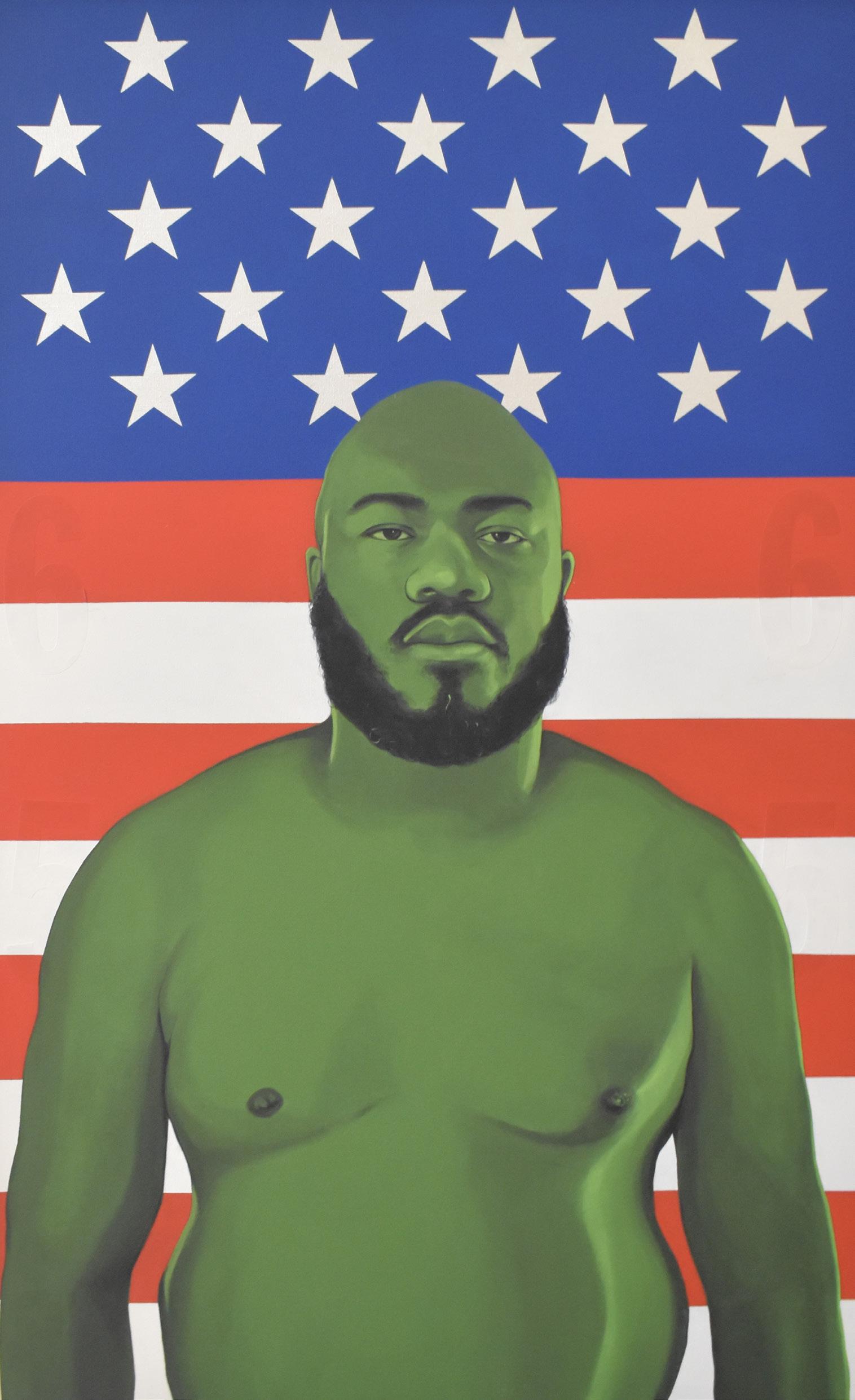
7
Enemy of the State, 2021, acrylic vinyl and silver leaf on canvas, 49 x 31" framed, 48 x 30" unframed

8
Invisible Man, 2021, acrylic on canvas, 37 x 73" framed, 36 x 72" unframed
Through the years, it has been common place for American media to showcase imagery of PEOPLE of COLOR being beaten and murdered. This has led to the desensitization of viewing such imagery and traumatization for said PEOPLE of COLOR. I can remember being nine years old and seeing Rodney King being beaten on television, I was terrified. That grainy old video from 1992 seems like one hundred years ago now, or perhaps something from the civil rights era.
Fast forward thirty years and those scenes have become all too common. Long gone are those old grainy videos, now we witness these scenes in high definition. And somehow our humanity remains invisible.
 - Clarence Heyward
- Clarence Heyward
9
This painting was conceived as I witnessed the murder of George Floyd…in HD, once again feeling the terror I felt at nine years old.
While You Were

10
Away, 2021, acrylic and variegated leaf on canvas, 49 x 36" framed, 48 x 31" unframed, private collection

Code
11
Red, 2022, acrylic on canvas, 73 x 61" framed, 72 x 60" unframed, private collection
Candyland is named after the board game which requires no strategy, players are never required to make choices, just follow directions, and the winner is actually predetermined by the shuffle of the cards. Sounds relatively close to the design of the American society we live in today. Only when you are a person of color those cards are rarely “shuffled” in your favor. As a Black father of two beautiful girls my responsibility is to teach them how to navigate the board, dealing them the best cards possible.
- Clarence Heyward

12
Candyland, 2021, acrylic and variegated leaf on canvas, 61 x 49" framed, 60 x 48" unframed, private collection

I Pray for You
13
,
2022, acrylic, vinyl and gold leaf on canvas, 49 x 31" framed, 48 x 30" unframed, Rubell Family collection

14
Death of the Unicorn, 2021, acrylic, vinyl and variegated leaf on canvas, 49 x 31" framed, 48 x 30" unframed, private collection
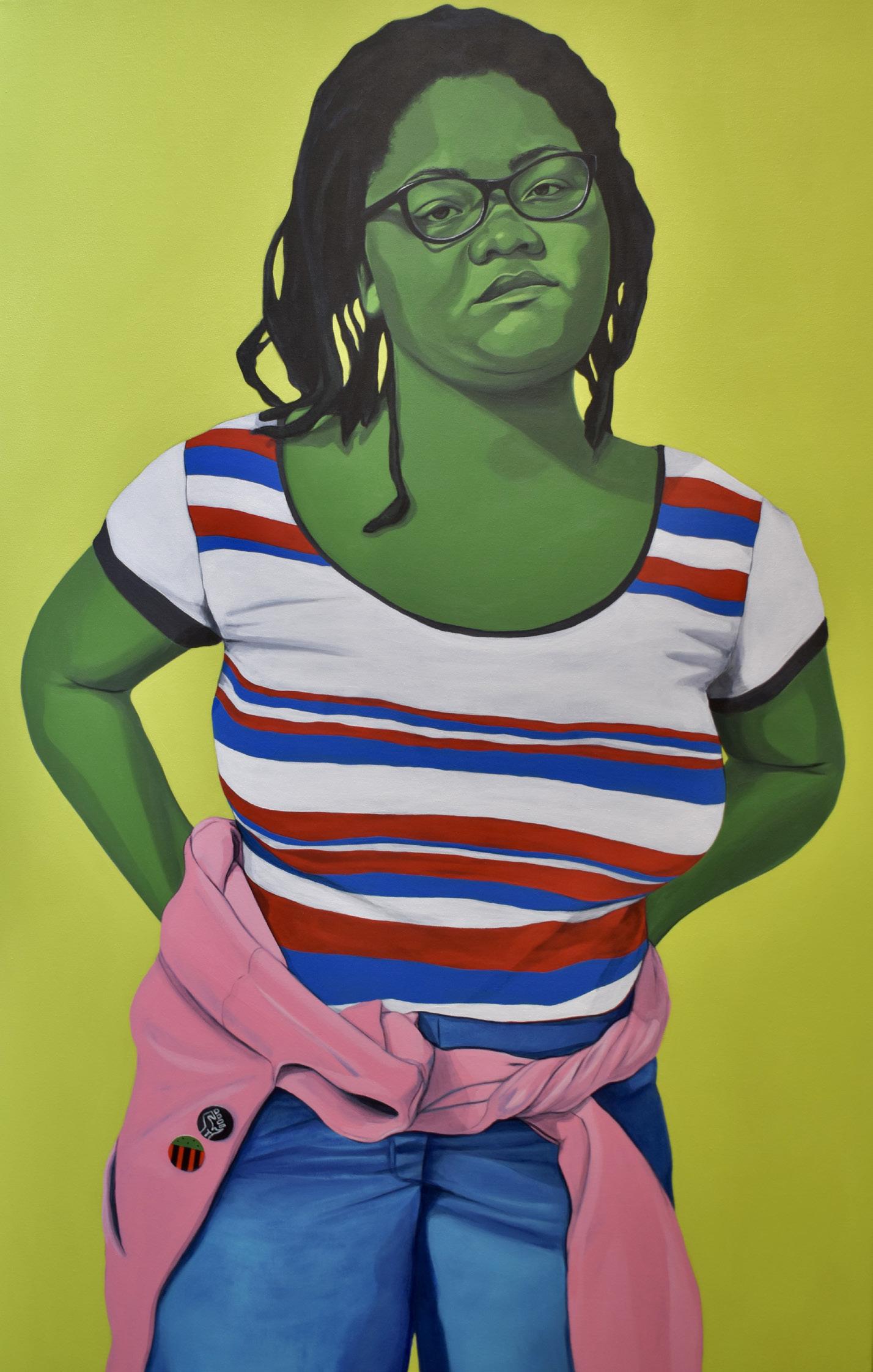
15
Sing for Me, 2021, acrylic on canvas, 49 x 31" framed, 48 x 30" unframed

16
Smile Every Day, 2023, acrylic on canvas, 49 x 31" framed, 48 x 30" unframed
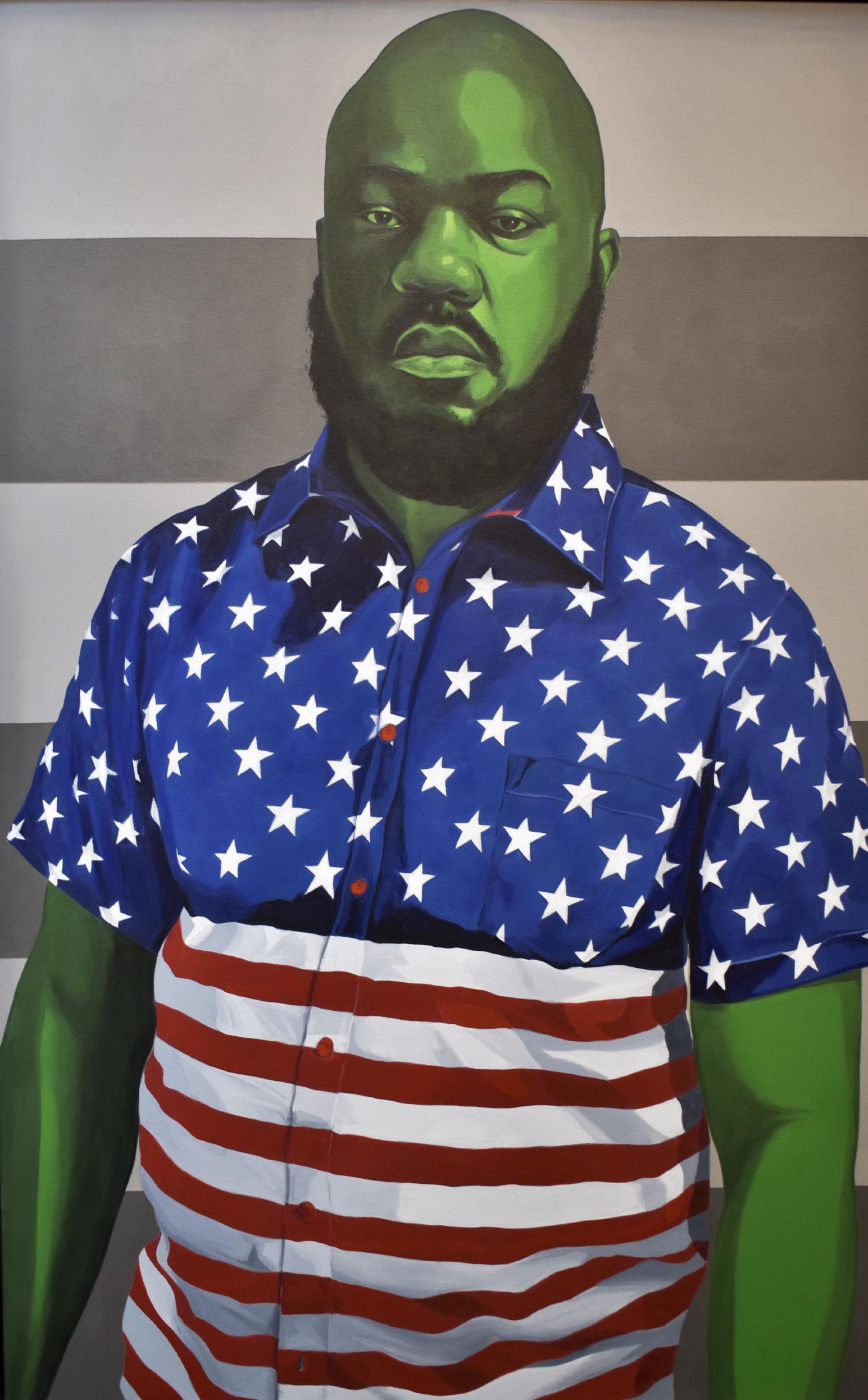
17
Proud Boy, 2021, acrylic on canvas, 49 x 31" framed, 48 x 30" unframed
Clarence grew up watching the show Family Matters. For him, it represented the happiness of childhood. Here, he depicts his own family enjoying time together. However, he makes the family portrait a diptych, so that if he were taken out of the equation, he’d like his wife and daughters to have a portrait of themselves as he hopes they would be--able to live a happy life as a family, without him.

18
- Tonya Turner Carroll

19
Family Matters, 2022, acrylic on canvas, 73 x 121" framed, 72 x 120" unframed, diptych

20
The Oracle, 2021, acrylic, acrylic mirror and gold leaf on canvas, 49 x 37" framed, 48 x 36" unframed

a
36"
21
Birth of
Nation, 2020, acrylic on canvas, 73 x 37" framed, 72 x
unframed


22 About a Dream:
Dreamer,
No Dream Too
No
Sweet
2023, acrylic on canvas, 20 x 20” framed, courtesy Alexandria and Thurston Hamlette
Big,
Dreamer
Too Small, 2023, acrylic on canvas, 21 x 21” framed, 20 x 20” unframed
Dare to Dream II, 2023, acrylic on canvas, 21 x 21” framed, 20 x 20” unframed
Dare to Dream, 2023, acrylic on canvas, 21 x 21” framed, 20 x 20” unframed
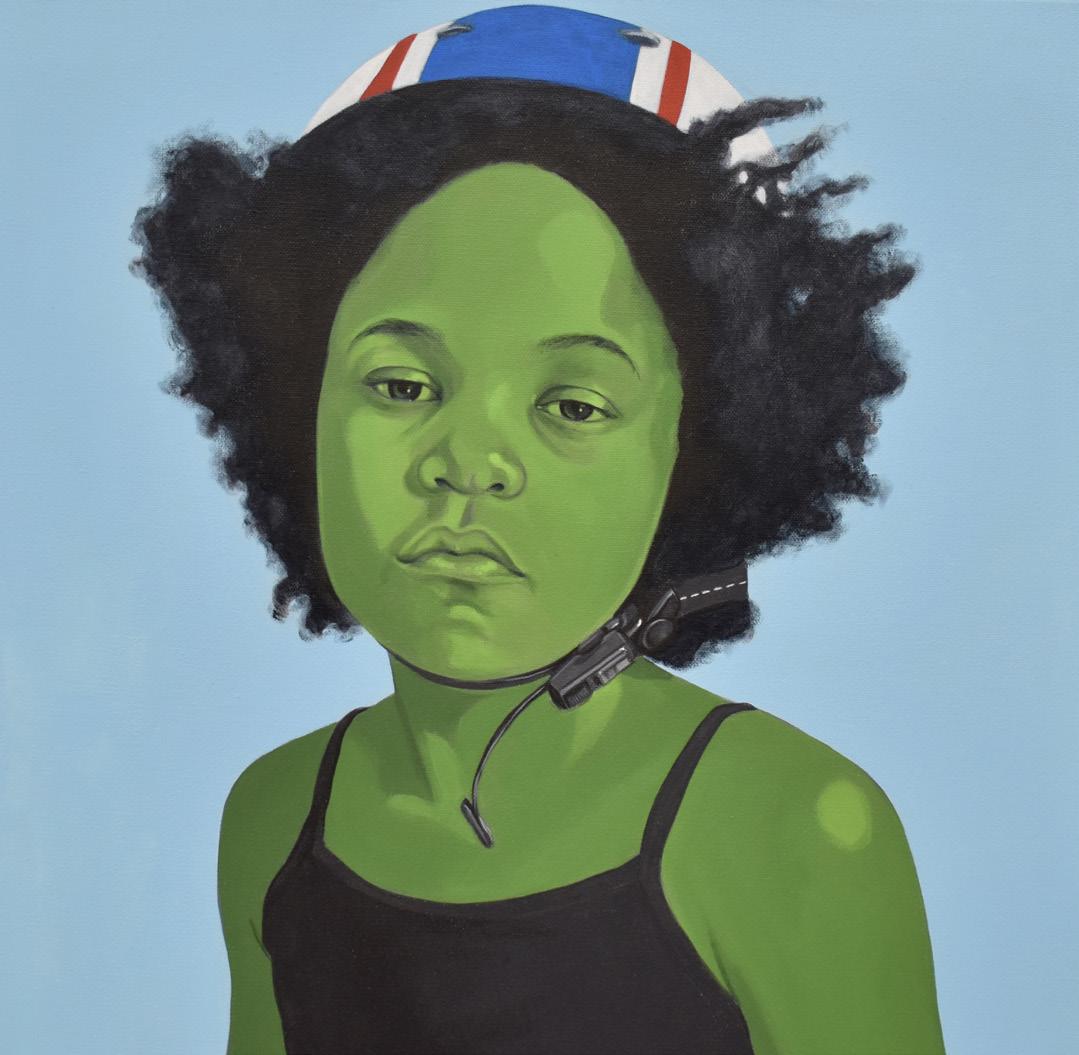

23

24
Danger of a Dream Deferred, 2021, acrylic on canvas with glitter, 35 x 24" framed
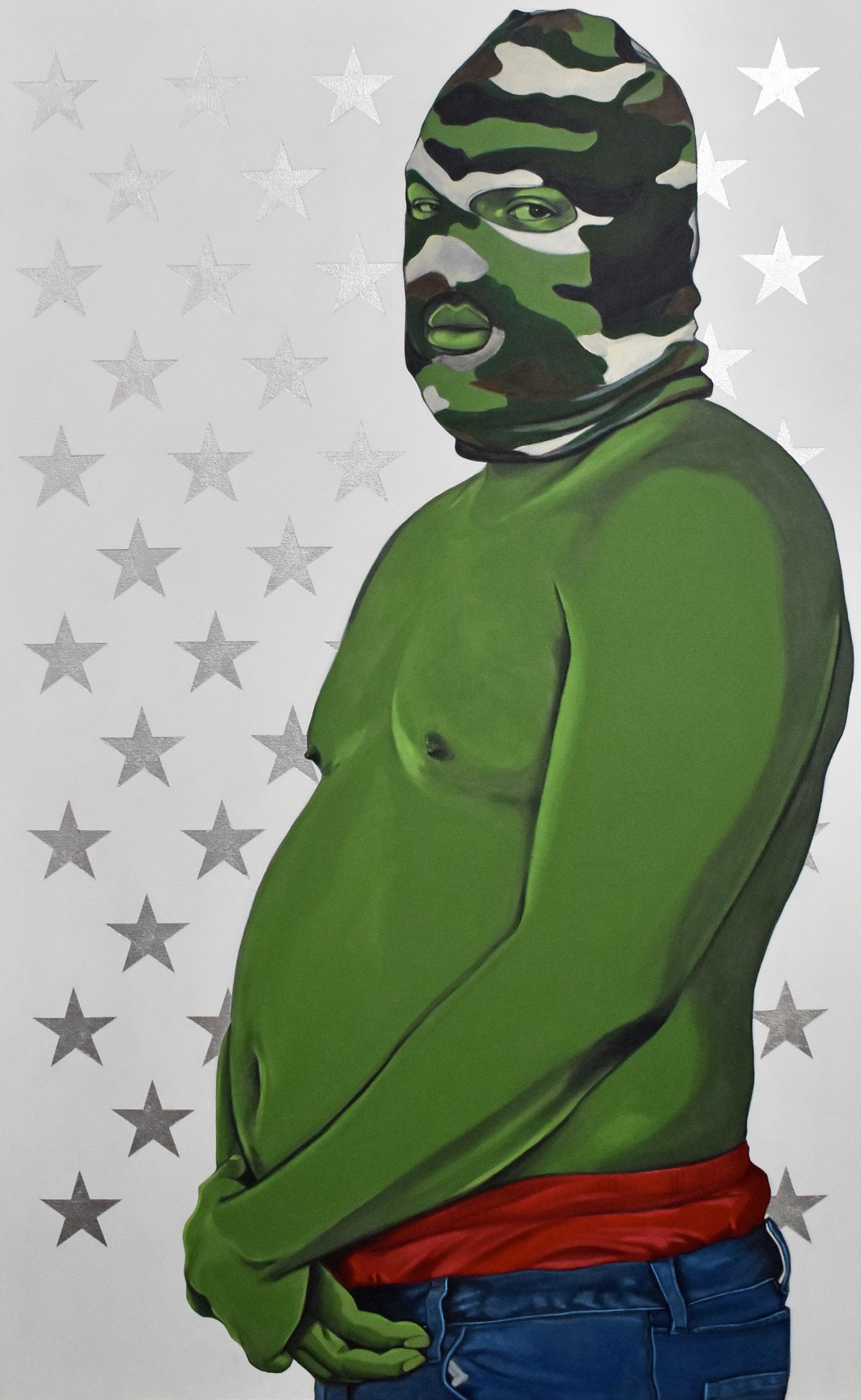
25
Menace II Society, 2022, acrylic and silver leaf on canvas, 49 x 31" framed, 48 x 30" unframed, private collection
Someone once suggested to Heyward that Black men should not wear hoodies “because they look threatening.” Clarence took on this stereotype wholeheartedly, using it as an opportunity to show that Black men often choose to wear hoodies simply because hoodies are comfortable, just as anyone else would. Heyward is completing a series of 50 paintings of Black men from various walks of life, all wearing a hoodie. Doctors, lawyers, musicians, artists, poets, and men of multiple other occupations, all embody the fact that the “threat” is not the ridiculous stereotype of a Black man in a hoodie, but it is our own projected prejudices.




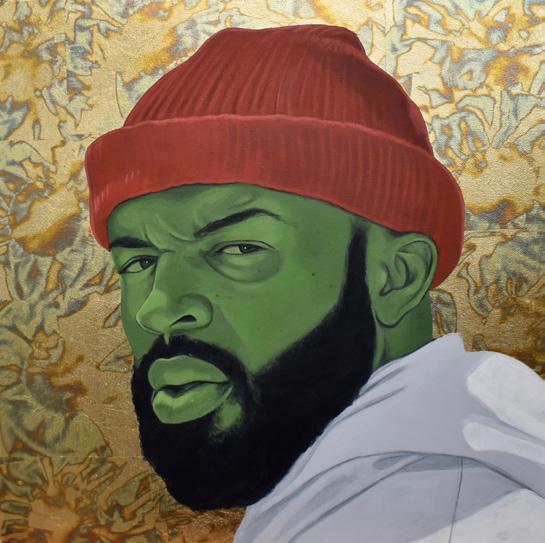
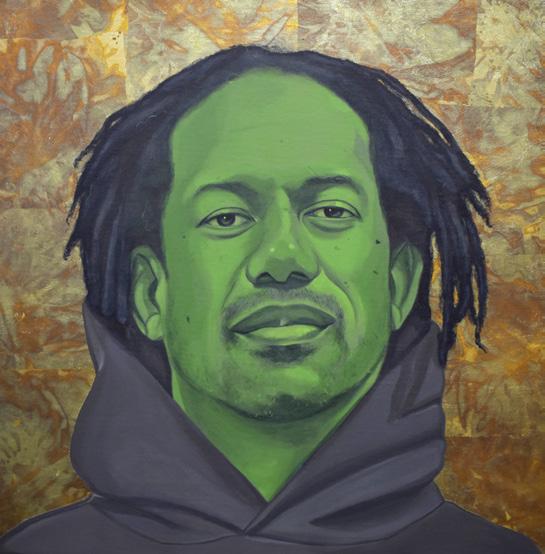
In My Hood Series, 2023, acrylic and variegated leaf on canvas, 49 x 31" framed, 48 x 30" unframed each



26
- Tonya Turner Carroll

27
Weekend, 2023, wood and
44
50
2”
Next
acrylic paint,
x
x

28
About Clarence Heyward
Clarence Heyward (American, b.1983) was born and raised in Brooklyn, NY. He is a painter and collagist whose work explores notions of the Black American experience. Through his images, he investigates cultural truths, challenges stereotypes, and questions identity. Clarence believes it that it is important to “paint his truth” and depicts persons of color, often his friends and family members, as subjects in order to interrogate issues both personal and political.
Beginning his journey as a full-time artist in 2019, he is best known for his dynamic and fresh take on figurative art. Heyward relocated to North Carolina, where he now lives with his wife and two daughters, to study Art Education at North Carolina Central University. Heyward has previously exhibited at the Nasher Museum of Art at Duke University, the Harvey B. Gantt Center for Cultural Arts, and the 21c Museum. He is a current Joan Mitchell Fellowship nominee.
UNSEEN is Heyward’s first museum solo exhibition, a wide-ranging show that includes both painting and sculpture, and bears references to police brutality, American television, race, religion, and family history. This will also be Heyward’s first exhibition in Santa Fe, and Turner Carroll Gallery is proud to bring Heyward’s work to the American West and the international art community.
Museum Exhibitions and Accolades
21c Museum of Durham
Harvey B. Gantt Center for Cultural Arts
Block Gallery Raleigh
Nasher Museum of Art at Duke University
(CAM) the Contemporary Art Museum of Raleigh
2022 Artist in Residence at NC State University
2021 Emerging Artist in Residence at Artspace, Raleigh
2020 The Brightwork Fellowship residency at Anchorlight, Raleigh
Scan the QR code to listen to Heyward speak more about his work.

29
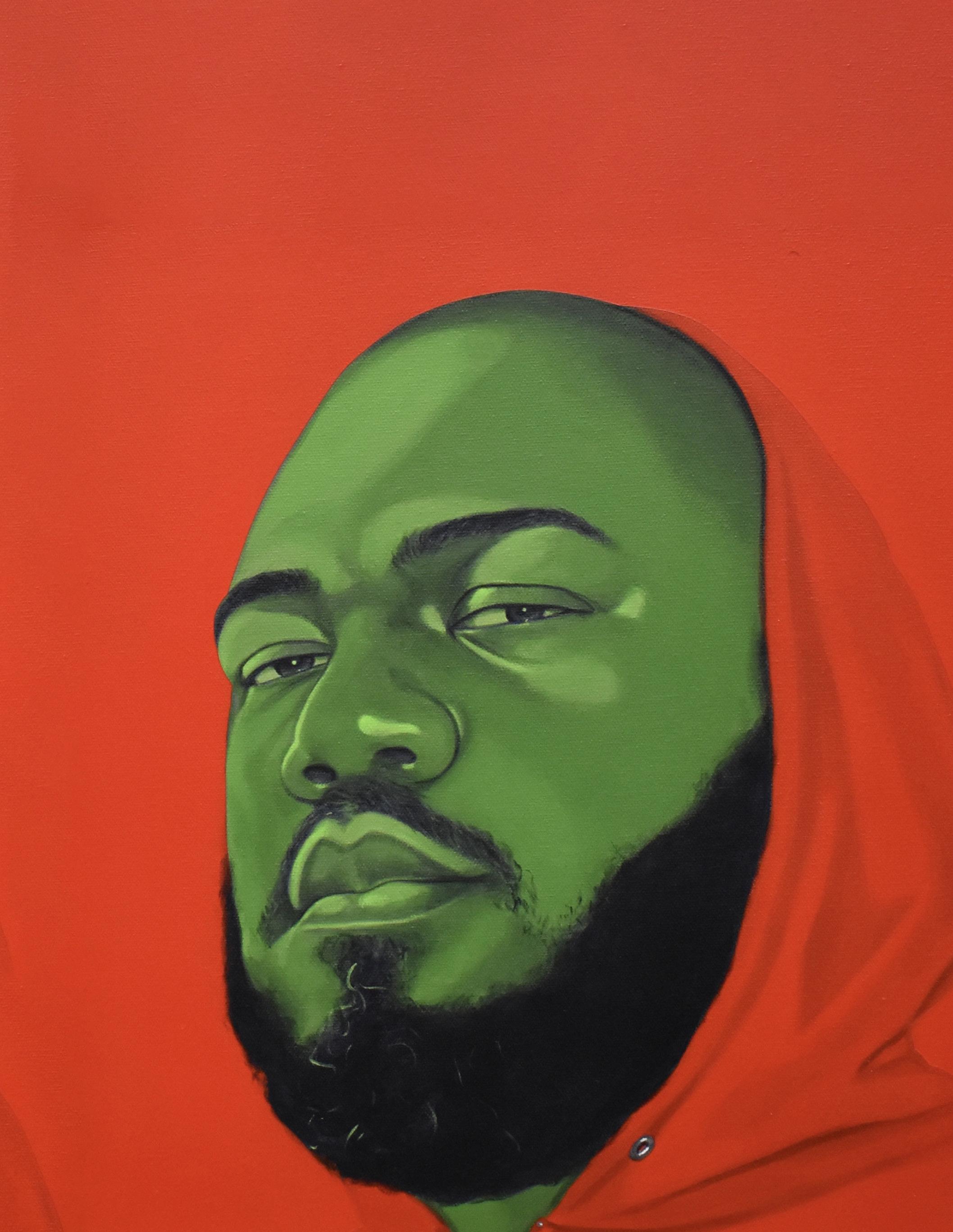



turnercarrollgallery.com | 725 Canyon Road | Santa Fe, NM 87501 | 505.986.9800











 - Clarence Heyward
- Clarence Heyward


































